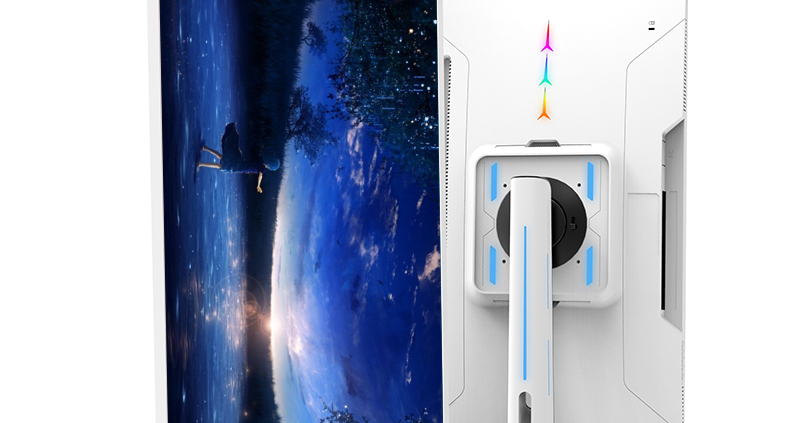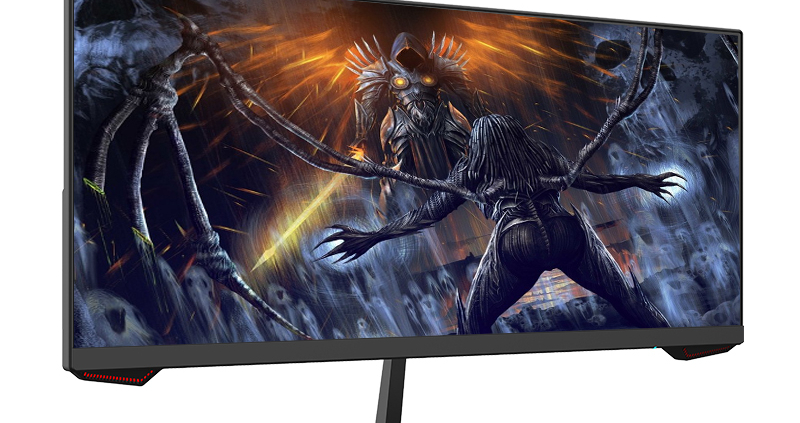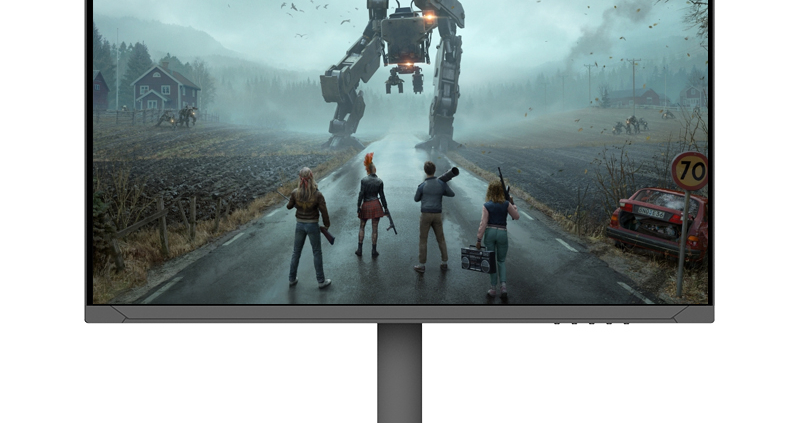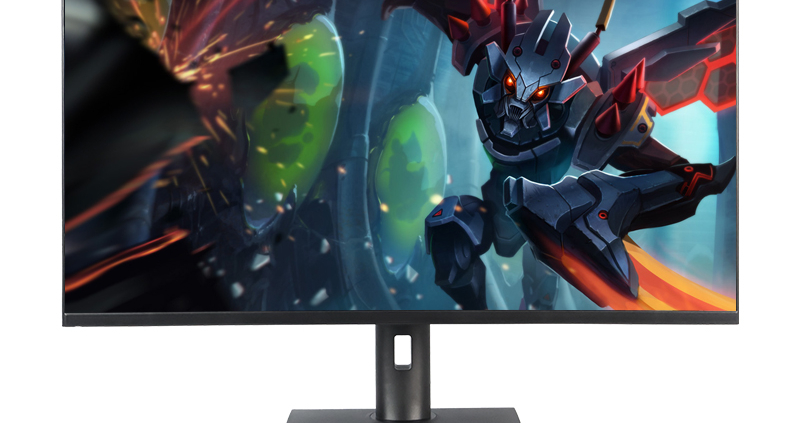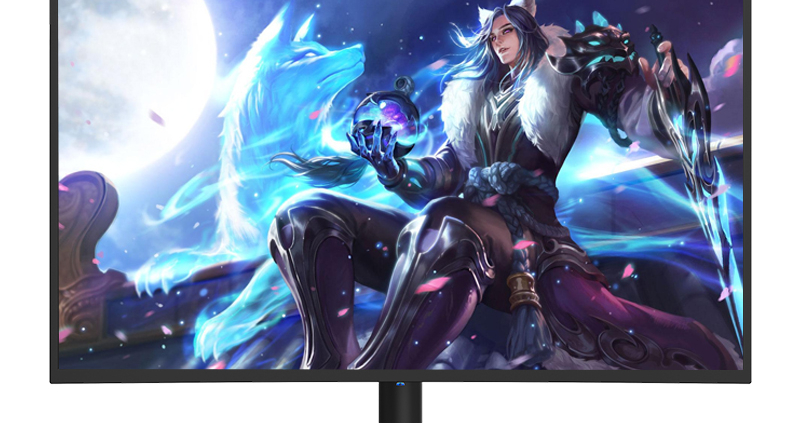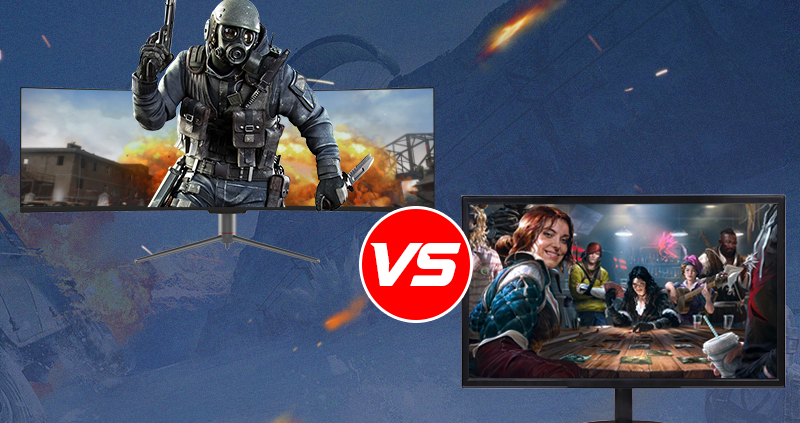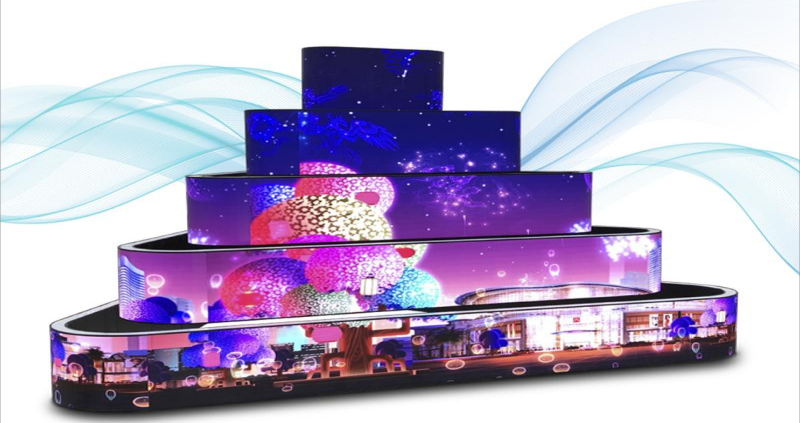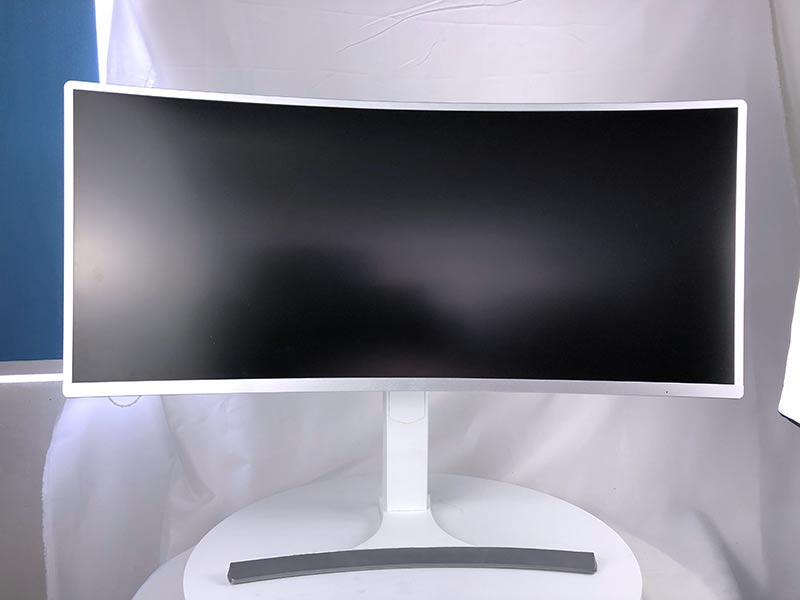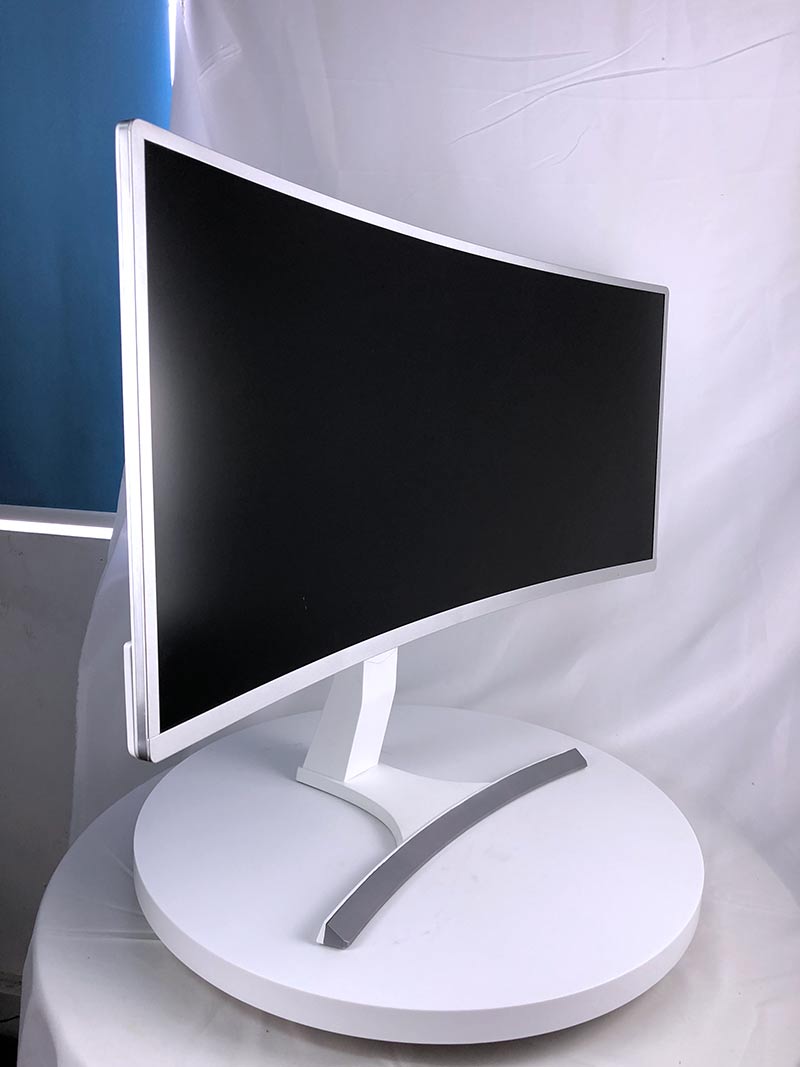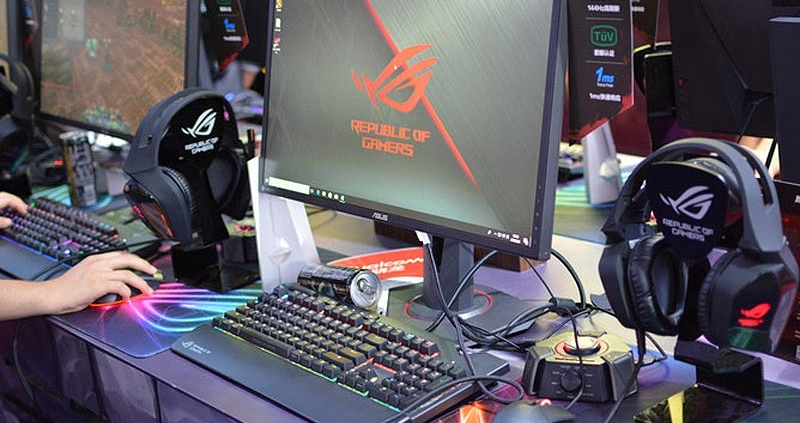Analysis of Global Display Market and Industrial Display Market
According to the latest data, the global display market is expected to grow from US$106.41 billion in 2015 to US$169.17 billion in 2022, with a compound annual growth rate of 7.5% from 2016 to 2022. High growth in the flexible display panel market, rising demand for OLED devices, and development of energy-efficient, attractive, and high-spec display products are expected to be the key drivers for market growth.
Consumer electronics will account for the largest share of the display market
Consumer electronics include televisions, smartphones, tablets, laptops, PC monitors and smart wearables. These applications hold a significant share of the market which in turn accounts for a significant share of the consumer electronics industry market. Growing demand for highly attractive and high-spec display products is the major driver for the growth and higher market share of the consumer electronics vertical market.
Quantum dot LED technology equipment market has the highest growth rate
For the display market, quantum dot devices are a new display technology. Although the market share is small, quantum dot devices are expected to grow at the highest rate due to their technical advantages over OLED and LED-backlit liquid crystal displays. The market penetration rate of QD-LED technology for TV and digital signage will also be high.
The North American market accounts for a major share of the global display market
North America, which includes the United States, Canada, and Mexico, accounted for the largest share of the display market in 2015. Among them, the United States is the main reason for the growth of the North American market. The growth of the North American market can be attributed to the rapid adoption of latest technologies such as QD-LED and OLED in consumer electronics, especially in the US region. Due to the large populations of the economies of Japan, South Korea, China, and India, coupled with the booming consumer electronics and retail industries, there are huge opportunities for panel manufacturers in the Asia-Pacific region.
Currently, major players in the global display market include LG, Samsung, AU Optronics, Innolux, Japan Display Inc, Sharp, BOE, HannStar, Varitronix, TCL, General Display Inc. .
After a brief analysis of the global industrial display market, a detailed analysis of the global industrial display market in terms of industry, type, application, and technology will follow.
Global Industrial Display Market Size, Share and Industry Trend, 2014-2025
industry analysis
The global industrial display market size was valued at USD 4.33 billion in 2016. Growing adoption of Industrial Internet of Things (IIoT), growing demand for multifunctional Human Machine Interface (HMI) devices, and growing usage of smart industrial displays are expected to significantly boost the market growth.
The industrial display industry is gaining more and more attention due to the innovative features offered by displays including automatic touch detectors and touch screen panels; radio frequency identification (RFID); Ethernet connectivity; and features such as resistance to high temperatures, shocks, vibrations, dust, scratches, and chemicals more prominent. The industry offers great investment opportunities as display products are suitable replacements for manual processes as well as outdated push-button technologies.
U.S. Industrial Display Technology Market Size, 2014-2025 (Million USD)
The U.S. industrial display market is characterized by continuous technological innovations to meet changing industrial needs. Technologies such as Thin Film Transistor (TFT) Liquid Crystal Display (LCD), Low Temperature Polysilicon (LTPS), Digital Optical Processing (DLP) and Color Filter (CF) are the latest innovations in the industry. Growing demand for multifunctional HMIs and smart touchscreen displays is also a major driver of industry growth and innovation.
Regulations related to the manufacture and sale of industrial displays vary by region or country level. For example, EU law on the Restriction of Hazardous Substances (RoHS) restricts to some extent the use of cadmium, lead, mercury and hexavalent chromium and flame retardants, such as polybrominated diphenyl ethers (PBDE) or polybrominated biphenyls (PBB) in Use of Electronic Devices.
Show type analysis
The panel market accounted for a huge share of the industrial display market in 2016 and is expected to continue dominating the market during the forecast period. Its growth can be attributed to wide range of applications, ease of use, and cheapness of equipment. Primary applications of panel IDs include operational process control in manufacturing facilities.
Marine displays are primarily used on commercial and marine vessels, cruise ships, and yachts, and are designed for protection against the harsh marine environment. These IDs accounted for the lowest revenue share in 2016, but the market is expected to grow at a CAGR of over 6% over the forecast period. Real-time sonar systems for ships, Ethernet integrated combat systems for battleship and tank balance systems, unmanned monitoring systems for seaport substations, and ship engine monitoring systems are the main growth drivers for this segment.
Rugged displays are designed to perform reliably in harsh industrial conditions, including extreme temperatures, vibration, and wet and dusty environments. Applications include military-grade monitors, railroad control systems, and task status display boards in manufacturing departments, among others.
Application Analysis
In 2016, the HMI application segment accounted for around 35% of the overall industrial display market revenue share and is expected to grow significantly over the forecast period. The HMI application segment is expected to account for the largest revenue share of the overall market by 2025. This can be attributed to the increasing presence of global HMI manufacturers in developing countries such as China and India.
The technological revolution promises global integration of the Internet for direct control of industrial machinery, infrastructure and factory processes. Strong growth in IIoT applications is also boosting the demand for HMI devices, which is expected to witness rapid growth during the forecast period.
Interactive displays enable two-way communication between machines and users, and the market is expected to grow at the highest CAGR from 2017 to 2025.
technical analysis
Display manufacturers are innovating in proprietary technologies to expand their revenue share in the market. For example, LED HERO Electronic Technology Co., Ltd. owns a patent for transparent LED products.
LCD technology accounted for more than 40% revenue share in 2016. However, its revenue share in the overall market is expected to decline over the forecast period. This may be due to the increased adoption of OLED technology due to the OLED pixel brightness control feature, which is not available in LCD and LED. In addition, compared to LCD and LED, the contrast effect of OLED is also better. OLED technology is expected to grow at the highest CAGR during the forecast period.
end use analysis
Manufacturing is the major segment and is expected to account for the highest revenue share during the forecast period. This is mainly due to the growing demand for display panels with embedded features to improve the efficiency of the manufacturing process. For example, built-in alarms used in manufacturing equipment can send real-time signals directly to operations managers when unforeseen events occur.
The energy and power sector is expected to grow at a CAGR of over 6.5% from 2017 to 2025. The Asia-Pacific region is expected to experience the highest growth rate in this segment, with Japan, China, and India being the major markets.
The revenue share of the mining and metals industry was close to 15% in 2016. Rising demand for ruggedized displays in the mining and metals industry is expected to drive the growth of this market.
Global Industrial Display End-Use Market (%), 2016
Regional Analysis
The North America region dominated the industrial display market with a revenue share of over 30% in 2016. This trend can be attributed to increasing investments in IIoT applications and multifunctional HIM devices. The growing growth of HMI and digital signage in the region is expected to open new business opportunities over the forecast period. Moreover, the region is one of the early adopters of industrial automation and is expected to consolidate these displays markets at a faster pace.
The U.S. is estimated to account for a large portion of the market owing to high demand generated by remote monitoring and HMI applications.
In addition, Southeast Asian countries such as India, Japan, and China are also driving the market growth in the Asia-Pacific region. Asia Pacific is expected to grow at the highest CAGR during the forecast period. The power generation and manufacturing segments are expected to play an important role in driving the demand for industrial displays in Asia Pacific.

